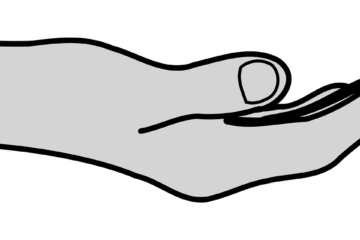Health Savings Accounts. This is one of the coolest and most useful financial tools in existence. A Health Savings Account (HSA) is a tool that you can use for BOTH medical expenses as well as retirement. A lot of people have no idea how to utilize an HSA. Or even moreso, when people here the term “Health Savings Account” they immediately think of healthcare and tune out. But please don’t tune out for this. Let me show you how an HSA can be a great tool to have in your financial arsenal!
(1) What is an HSA?
A Health Savings Account is an account that can be set up to help pay for your medical expenses and/or an account to help supplement your retirement. (We’ll get into the different ways to use it in a minute.)
An HSA can only be used if you have a “High Deductible Health Plan”. If you have a high deductible health plan, that means that you have health insurance coverage that has low premiums (the amount that you pay each paycheck, month, etc.) and a high deductible (the amount of healthcare that you are responsible for paying for before the insurance company steps in).
If you are unsure if you have a high deductible health plan, just call your insurance company or go to your HR representative and they will be able to tell you very quickly.
The best thing about an HSA is that it is TRIPLE tax free. It is the only savings vehicle to be triple tax free as well. The only catch is that you have to use the money that you put into the HSA for qualified medical expenses. That means that you can’t use the money put into the HSA for anything non-medical. If you take money out of the HSA for something non-medical and before you turn 65, you will have to pay a 20% penalty PLUS your tax rate. Ouch.
But in order to begin to understand how really awesome the HSA is, let me explain what triple tax free means.
(2) What is Triple Tax Free?
There are three components to triple tax free (duh). Let me show you how an HSA is all of them.
Triple Tax Free #1: Contributions are Tax Deductible
Everything that you put into an HSA (up to the limits) are completely tax deductible. This is the same as your 401k contributions. That means that you will not pay taxes on the money that you put into HSA.
For example, you get paid $4,000 every month and you decide to put $500 into your HSA. That means that you will only pay taxes on $3,500. This is because your HSA contributions are tax deductible. 🙂
Triple Tax Free #2: Growth is Tax Deferred
Again, this is just like your 401k. All the money that you put into your HSA has not yet been taxed yet. This allows the money to grow to a larger amount over time.
This money can be invested in almost any way that you choose (the restrictions are the same as other retirement accounts). Or the money can simply be left in a cash account that will not earn any interest. (We’ll get into why someone would invest the money or not invest the money in a minute.)
But an HSA is the ONLY financial tool that allows the money to grow tax deferred and you STILL don’t have to pay taxes on it (if used correctly).
Triple Tax Free #3: Qualified Withdrawals are Tax Free
This is the coolest part, in my opinion. If you take money out of your HSA for a qualified medical expense, then you will not pay ANY taxes on that money! And the list of qualified medical expenses is pretty vast, honestly.
Remember, if you take the money out for some reason that is NOT a qualified medical expense, you will have to pay your tax rate PLUS a 20% penalty. Don’t do that.
(3) Two Ways to Use a Health Savings Account
This might be the most important part of this article.
You might be thinking, “This sounds great and all. But how do I actually use the HSA?”
Good question.
There are basically two ways to use the HSA.
As a Slush Fund to Pay for Medical Expenses
This is the way the VAST majority of people use the HSA and there is absolutely nothing wrong with it.
Most people use the HSA to simply help pay for medical expenses. The reason to use the HSA to pay for medical expenses is because you don’t pay taxes on that money at all.
For example, if you have a hospital bill for $1,000 and you can either pay for it out of your regular checking account or through your HSA, most people choose the HSA.
This is because (1) that is what the money is there for and (2) they actually save money because the money that is in their HSA is tax free and the money in your checking account has already been taxed.
Also, an HSA rolls over from year to year. So if you contribute $3,000 to your HSA this year and don’t use any of it, it will still be there for you next year to use.
The money in an HSA can pile up year after year if you like as well. 🙂
Which leads me to the next way to use an HSA…
As a Retirement Account
Using your HSA as a retirement account is like sending your finances into hyper-drive.
As I said before, you can let your HSA pile up year after year and you can have the money invested as well.
If you do this, over time you will have a really big HSA account lying around.
If you have reached at least age 65, you can take that money out of the HSA for ANY reason that you want and avoid the 20% penalty. However, you will have to pay taxes on the money that you take out if it is for something other than a qualified medical expense. (At this point, it works pretty much the same as a 401k.)
If you then want to take money out of that account (before retirement or after retirement) and you don’t want to be penalized or taxed on it you have to do this:
- Pay for your qualified medical expenses out of funds OTHER than your HSA (through your checking account or a credit card, etc.) throughout the years that you have your HSA.
- Save ALL of your receipts from those qualified medical expenses (they can be saved digitally if you like).
- Reimburse yourself for all of those YEARS of medical expenses tax free!
It is really awesome. Seriously.
And this can be done BEFORE you reach 65. 🙂
Let’s go over an example of a hypothetical person, Jerry.
Jerry is 25 and he has a high deductible health plan that allows him to have an HSA. Jerry is single and never gets married and contributes the $3,000 to the HSA each year. The HSA grows at 8%.
Every time that Jerry has to go to the doctor or have a health expense, he pays for it with a credit card instead of using his HSA. He incurs $2,500 each year of medical expenses and saves all of the receipts on the cloud.
At any point, Jerry can reimburse himself for his medical expenses in this year and/or previous years.
When Jerry is 45, he decides to take several months off to hike the Appalachian Trail. He then can reimburse himself for 20 years of medical expenses and it is TAX FREE even though he is not at retirement age yet!
This is what it looks like:
| Amount Invested Annually | $3,000 |
| Years Invested | 20 |
| Total Amount Invested | $60,000 |
| Growth Rate | 8% |
| Total Amount in Account | $137,285 |
| Amount of Qualified Medical Expenses | $50,000 |
| Amount Withdrawn | $50,000 |
| Taxes on Withdrawn Amount | $0 |
| What is Left Over in His HSA | $87,285 |
That means that the account would STILL have $87,285 left over in it after he withdraws his previous medical expense amount!
This is a really awesome tool. 🙂
Final Thoughts
A Health Savings Account is such an awesome financial tool. It saves you on taxes on medical costs and you can also let it grow into a retirement account and there are multiple ways to use it.
If you have a high deductible health plan, then you should seriously consider taking advantage of an HSA. If you are not, you are really missing out on some good financial perks.
I know that most of personal finance can be confusing (including HSAs), but I am here to help!
You can do this!
Until next time!



0 Comments